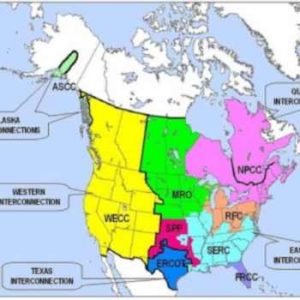

They own the generation, transmission and distribution systems used to serve electricity consumers. wholesale electricity market are traditionally regulated (gray areas), meaning that vertically integrated utilities are responsible for the entire flow of electricity to consumers.
:no_upscale()/cdn.vox-cdn.com/uploads/chorus_asset/file/20040811/Screen_Shot_2020_06_16_at_11.16.52_PM.png)
Both wholesale and retail markets can be traditionally regulated or competitive markets. Retail markets involve the sales of electricity to consumers. Wholesale markets involve the sales of electricity among electric utilities and electricity traders before it is eventually sold to consumers. electricity markets have both wholesale and retail components.

Regional balancing authorities manage grid operations to ensure that electricity supply constantly matches power demand in a balance that maintains the reliable service of the electric grid system. The redundant design of the grid helps prevent service interruptions to retail customers due to transmission line or power plant failures. The vast network structure of the interconnections improves economics by allowing generators to be optimally sited and helps maintain the stability and reliability of the grid by delivering multiple pathways for power to flow. The Electric Reliability Council of Texas (ERCOT) covers most of the state of Texas. The Western Interconnection comprises the area west of the Rocky Mountains and the Great Plains to the Pacific coast.

The Eastern Interconnection comprises the area from the Great Plains states (excluding most of Texas) eastward to the Atlantic coast. electricity generation at utility-scale facilities in 2019. The following chart is from EIA reported data and shows major energy sources and percent shares of U.S. Most electricity is produced using conventional sources such as natural gas, oil, coal and nuclear. power grid is made up of over 7,300 power plants, nearly 160,000 miles of high-voltage power lines, and millions of miles of low-voltage power lines and distribution transformers, connecting 145 million customers throughout the country (EIA, 2016).Įlectricity in the United States is generated using a variety of resources and technologies. Energy Information Administration (EIA), the U.S. The electricity grid is a complex machine in which electricity is generated at centralized power plants and decentralized units and is transported through a system of substations, transformers, transmission lines and distribution lines that deliver the product to its end user, the consumer. Since large amounts of electricity cannot be stored, it must be produced as it is used.Īccording to the U.S. electricity grid and market are organized. In order to understand the role of renewable energy in the electricity market, it is important to know how the U.S. The green power market is a part of the larger electricity market in the United States. Video: Electricity Generation in the US.


 0 kommentar(er)
0 kommentar(er)
